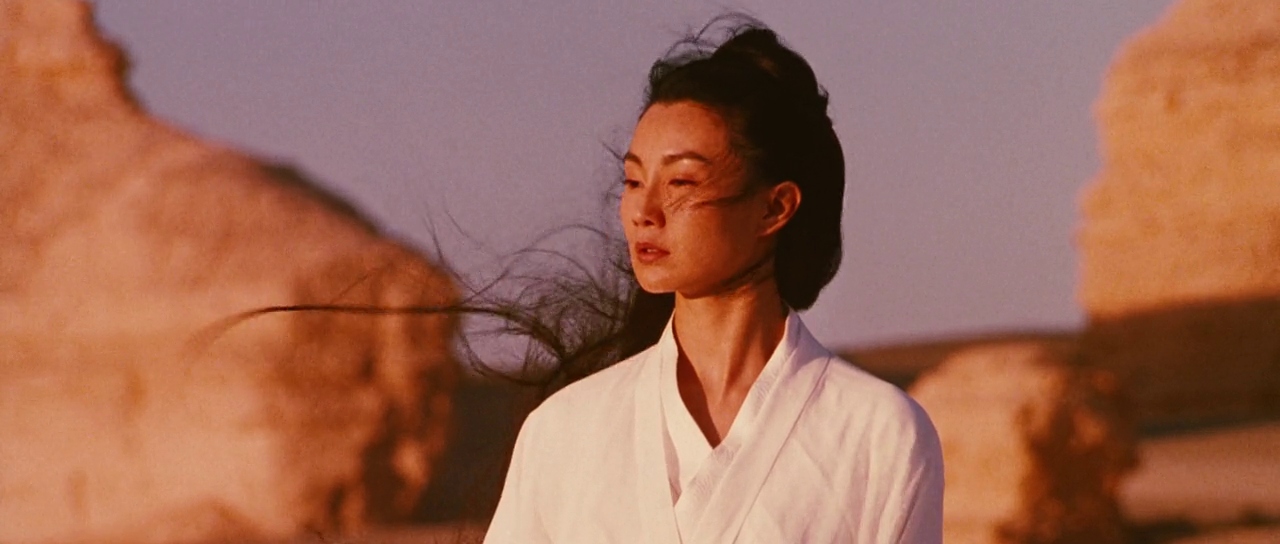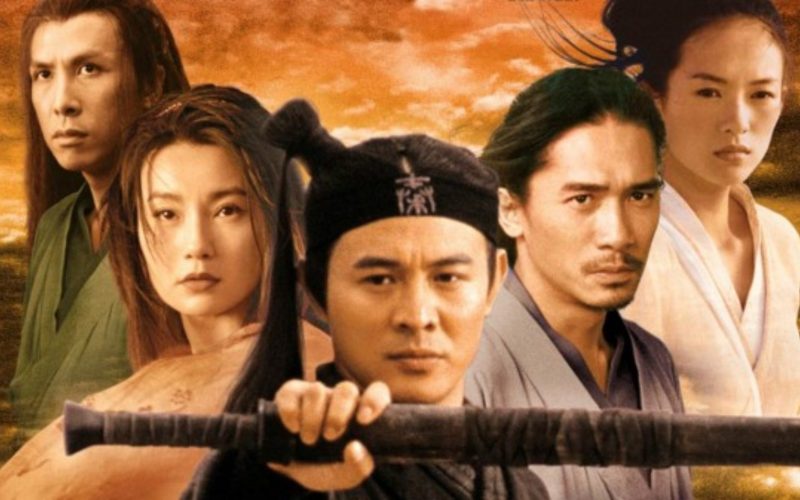Hero (2002).
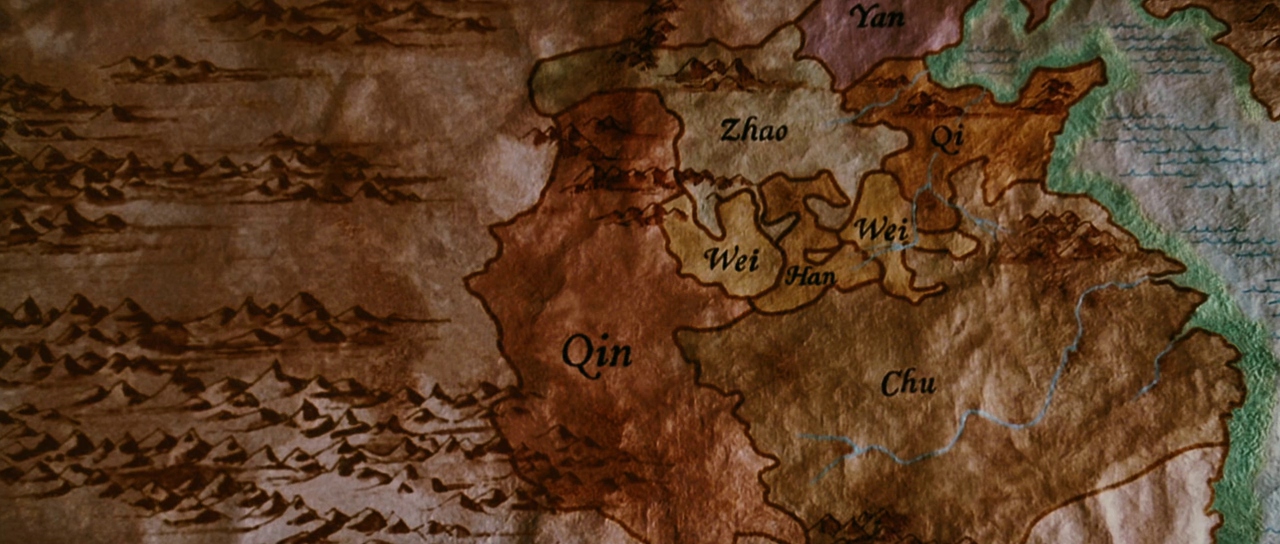
One of the many delights when watching a great film is appreciating the wonderful cinematography which sweeps over our screens. Whether it’s in colour or black & white, great cinematography can touch us in ways that are difficult to adequately describe. It can affect us at a level so primal, so instinctive, that words just don’t suffice.
One of the most visually beautiful films ever made is undoubtedly Zhang Yimou’s 2002 masterpiece, Hero. Zhang is known for his ability to paint light in the most striking of colours. He began his career behind the camera as a cinematographer and this flare was obvious in his very first film Red Sorghum (1988). Since then he has directed, amongst others, the wonderful Raise the Red Lantern, Ju Dou, House of Flying Daggers and The Curse of the Golden Flower.
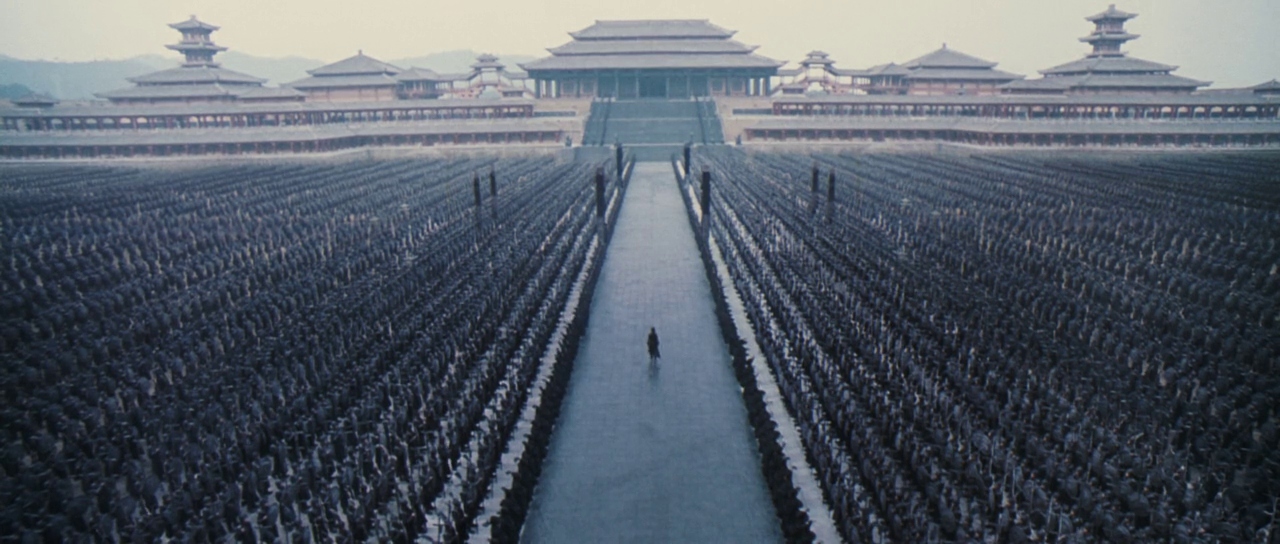
Hero was a massive international hit grossing $177 million worldwide, and it continued to promote to millions the thrills and the beauty of Wuxia on the big screen (Hero was released two years after Ang Lee’s megahit Crouching Tiger, Hidden Dragon).
The story is, paradoxically, simplistically complex and in many ways harks back to Akira Kurosawa’s Rashomon. One day a nameless prefect from the Qin province arrives at the capital city to speak to the King. The King lives in a great hall, completely isolated with no company or decoration, after assassination attempts by three warriors – Broken Sword, Flying Snow and Long Sky.
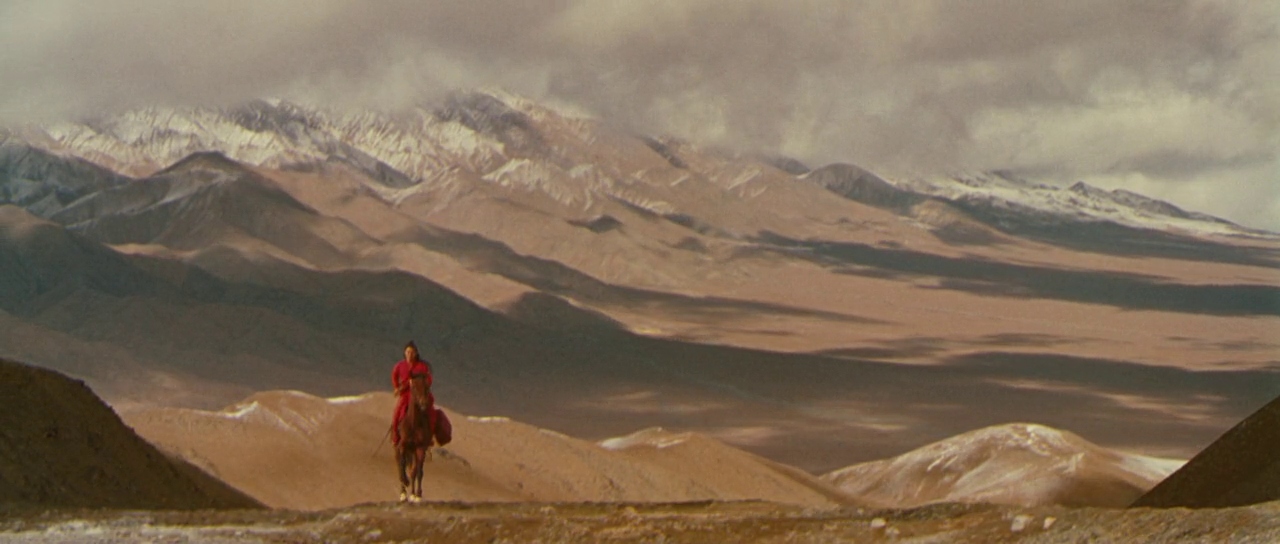
Part of the King’s security measures determines that no visitor should get closer than 100 paces of him. On greeting Nameless (Jet Li) at this distance, the King is presented with a gift – Long Sky’s sword. Nameless then recounts his battle with Long Sky (Donnie Yen) and details how he defeated him. Because of this he begins to win the King’s trust and is given permission to move closer. He then presents the King with Flying Snow’s and Broken Sword’s weapons and eventually gets to within 10 paces of the monarch.
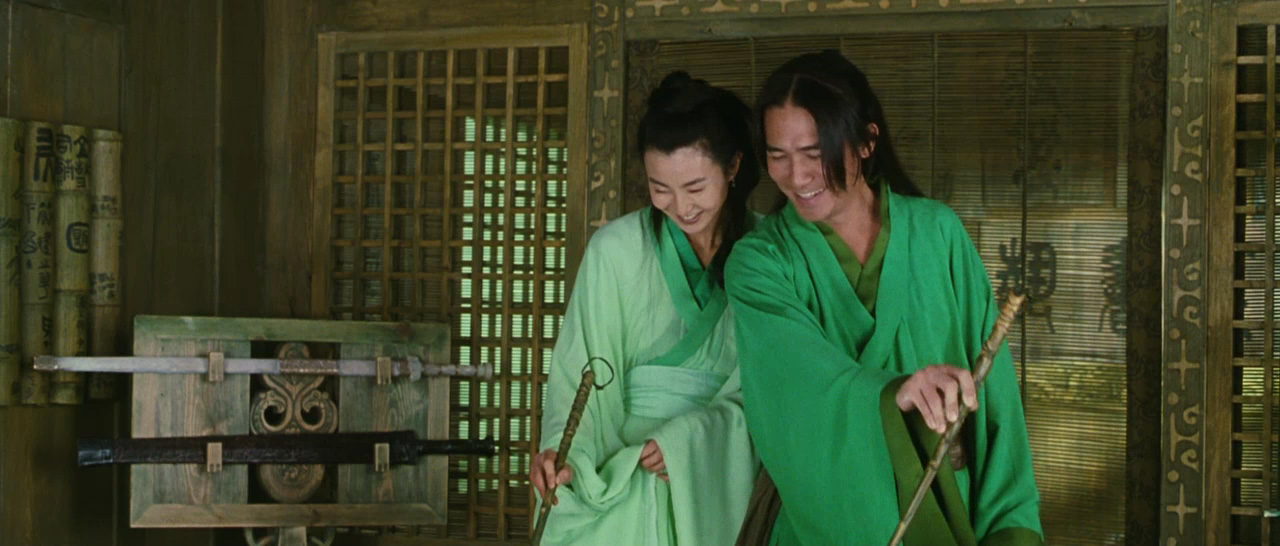
Each time he recounts the battles and the strategies he used to defeat his three opponents however, after a while, the King begins to suspect that Nameless is lying. He then retells the stories outlining how Nameless conspired with Snow, Sword and Sky, to spin a story so he can get close to the King and assassinate him. It turns out that the King is correct. Nameless admits this then retells the story for a third time, this time recounting the truth.
Each of the various stories involve battles, some of which are truly breath-taking and original especially for a western audience. For many of us in Europe and the US, the only exposure we have had to the ballet that is Wuxia was Crouching Tiger, Hidden Dragon, a film which involved gravity defying ballet in tree-tops and across roof tops. These battles continue in Hero with one fight taking place on a lake, with the two fighters – Nameless and Broken Sword (Tony Leung) running on a lake, bouncing off the surface, their knifes hardly piercing the water, their clothes seemingly keeping completely dry.
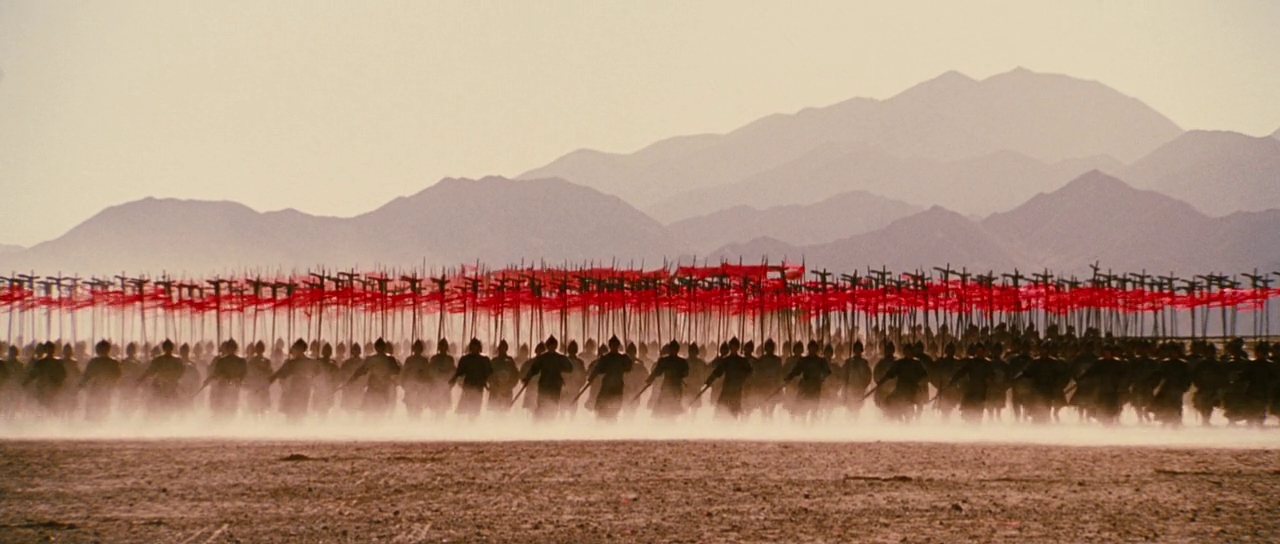
Although Hero is full of great fight scenes, two in particular stand out. The first, within the first few minutes of the film’s opening, is the meeting between Nameless and Sky. It takes place in a courtyard in the rain and the bulk of it occurs in the imaginations of the two protagonists. It is filmed in black and white – indicating the fact that it isn’t taking place in the real world and is accompanied by an old man playing a traditional Chinese guitar. It’s a sublimely elegant scene with showcases the talents of two of my favourite martial artists.
The second is very different. This is between two women – Snow (Maggie Chueng) and Sword’s apprentice Moon (played by the always delightful Zhang Ziyi). Whereas the previous battle was in monochrome, this one is in the glorious yellows, browns and golds of autumn. Moon is angry that her master has been killed and challenges Snow who doesn’t really want to fight. As Moon attacks, Snow stirs up the leaves off the ground and from the surrounding trees causing a kaleidoscope of brightness and magnificence. Moon is repelled by a mighty gale created by the swish of Snow’s sword. This is visual confectionery at its most glorious.

The meaning of the film comes down to one word which has proven somewhat controversial: Tianxia. On the original US release, and on the recent Amazon Prime release, this word is translated as ‘Our Land’ suggesting that the film is solely about the unification of China as one country, however, the literal translation is ‘Under Heaven’ meaning the whole world. Hero was released in 2002 and production started a few weeks after 9/11 and this second, correct translation could be a call for the world as a whole to come together.
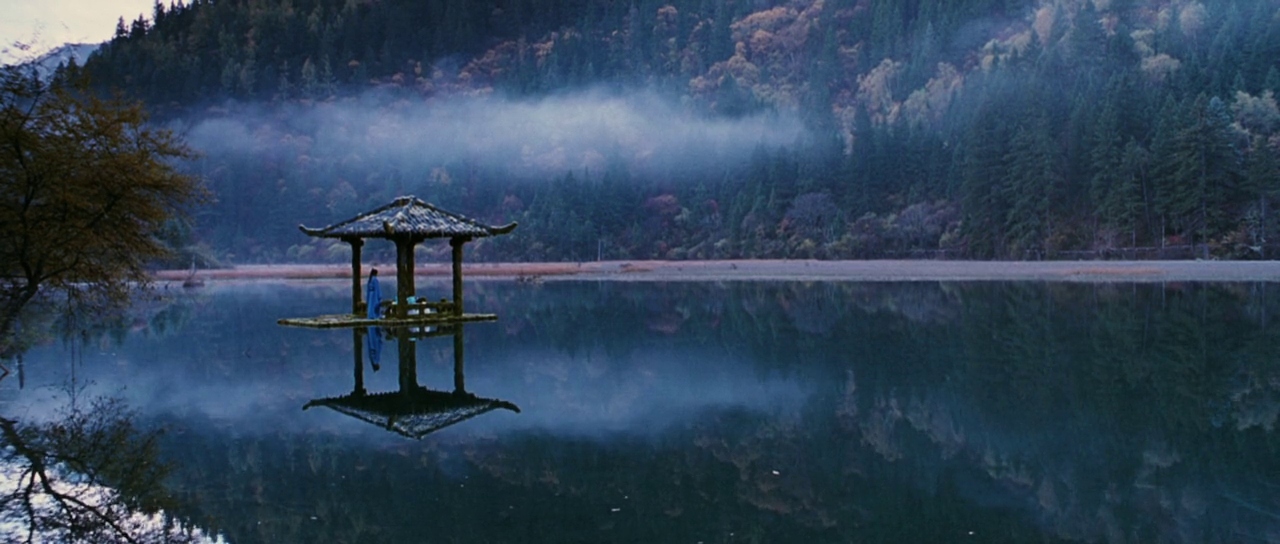
The performances in Hero are all uniformly excellent and each person’s physicality is put on show to dazzling effect. Jet Li is stoic throughout but never distant and Tony Leung and Maggie Chueng, who had already sizzled in In The Mood For Love, smoulder throughout Hero.
But it’s the achingly beautiful cinematography by the ever reliable Christopher Doyle (In The Mood For Love, ChungKing Express) that raises Hero head and shoulders above so many other similar films in the martial arts genre. Freeze the film at any point and you could frame the image and display it proudly.
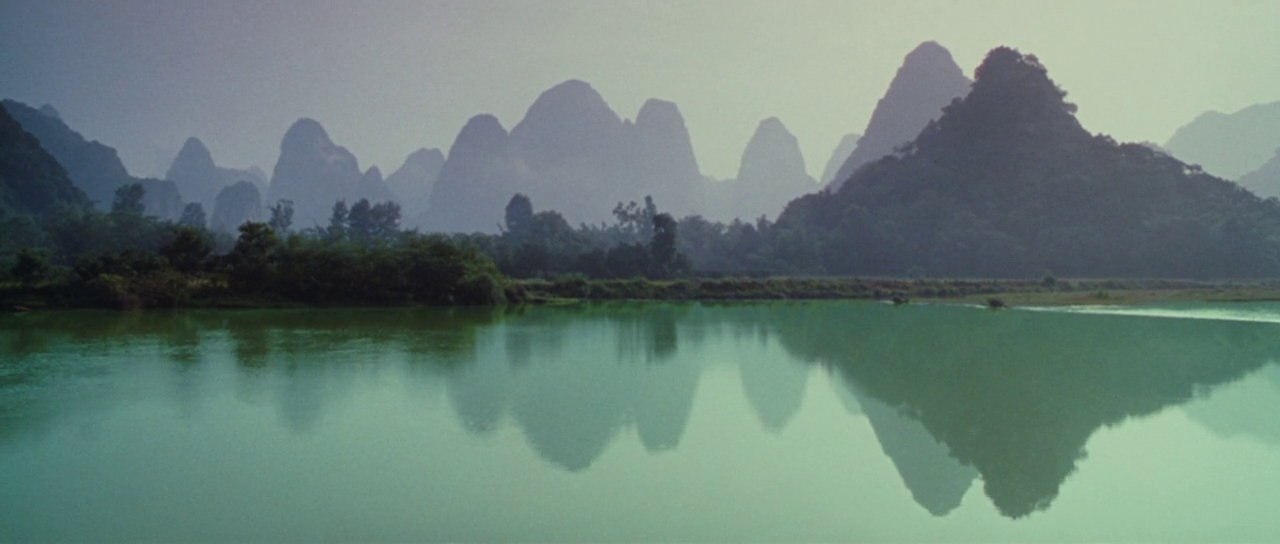 Zhang Yimou keeps a story that could have been overly complicated and ensures it is easy to follow and remains interesting throughout, proving why he’s one of the best directors to come out of China.
Zhang Yimou keeps a story that could have been overly complicated and ensures it is easy to follow and remains interesting throughout, proving why he’s one of the best directors to come out of China.
If you love Martial Arts then you will no doubt enjoy the opulence of Hero but this is a film for all lovers of film. If you have any eye for the beautiful then you are invited to a feast. Martial Arts at its best is a dance and here we are witness to the equivalent of Fred Astaire, Ginger Rogers, Gene Kelly and more.
Hero is currently available in the UK on DVD/Blu Ray and Amazon Prime.
Film ’89 Verdict – 9/10
